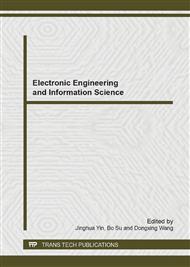[1]
Roman Prokofyev, Gianluca Demartini and Alexey Boyarsky. Ontology-based word sense disambiguation for scientific literature. In Proceedings of the 35th European Conference on IR Research. 2013: 594~605.
DOI: 10.1007/978-3-642-36973-5_50
Google Scholar
[2]
Gang Li, Guangzeng Kou and Ercui Zhou. Symmetric trends: optimal local context window in chinese word sense disambiguation. In Proceedings of the 9th International Conference on Hybrid Intelligent Systems. 2009: 151~154.
DOI: 10.1109/his.2009.244
Google Scholar
[3]
Hayden Wimmer and Lina Zhou. Word sense disambiguation for ontology learning. In Proceedings of the 19th Americas Conference on Information Systems. 2013: 4036~4045.
Google Scholar
[4]
Bartosz Broda and Wojciech Mazur. Evaluation of clustering algorithms for Polish word sense disambiguation. In Proceedings of the International Multiconference on Computer Science and Information Technology. 2010: 25~32.
DOI: 10.1109/imcsit.2010.5679861
Google Scholar
[5]
De Cao Diego, Basili Roberto and Luciani Matteo. Robust and efficient page rank for word sense disambiguation. In Proceedings of 2010 Workshop on Graph-Based Methods for Natural Language Processing. 2010: 24~32.
Google Scholar
[6]
Sean Szumlanski and Fernando Gomez. Evaluating a semantic network automatically constructed from lexical co-occurrence on a word sense disambiguation task. In Proceedings of Fifteenth Conference on Computational Natural Language Learning. 2011: 190~199.
Google Scholar
[7]
Zhi Zhong and Hwee Tou Ng. Word sense disambiguation improves information retrieval. In Proceedings of the 50th Annual Meeting of the Association for Computational Linguistics. 2012: 273~282.
Google Scholar
[8]
Nyein Thwet Thwet Aung and Ni Lar Thein. Word sense disambiguation system for Myanmar word in support of Myanmar-English machine translation. In Proceedings of the SICE Annual Conference. 2011: 2835~2840.
DOI: 10.5120/3323-4568
Google Scholar
[9]
Yee Seng Chan, Hwee Tou Ng and David Chiang. Word sense disambiguation improves statistical machine translation. In Proceedings of the 45th Annual Meeting of the Association for Computational Linguistics. 2007: 33~40.
Google Scholar
[10]
Marine Carpuat and Dekai Wu. Improving statistical machine translation using word sense disambiguation. In Proceedings of the 2007 Joint Conference on Empirical Methods in Natural Language Processing and Computational Natural Language Learning. 2007: 61~72.
DOI: 10.3115/1220575.1220672
Google Scholar


